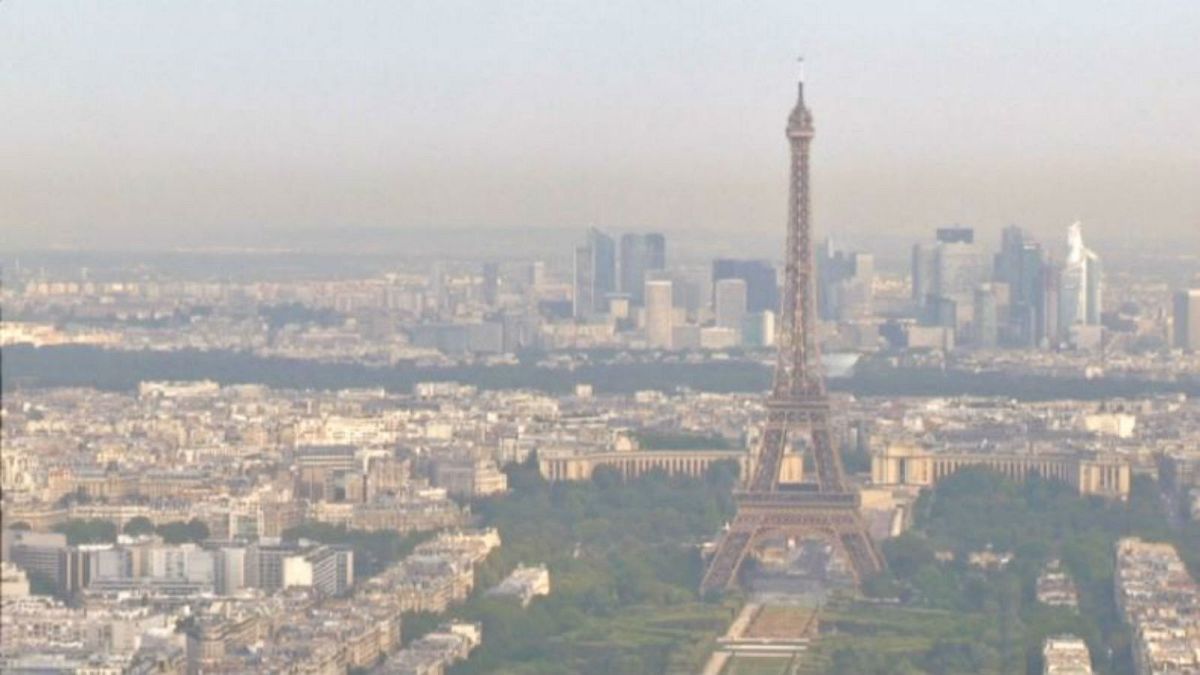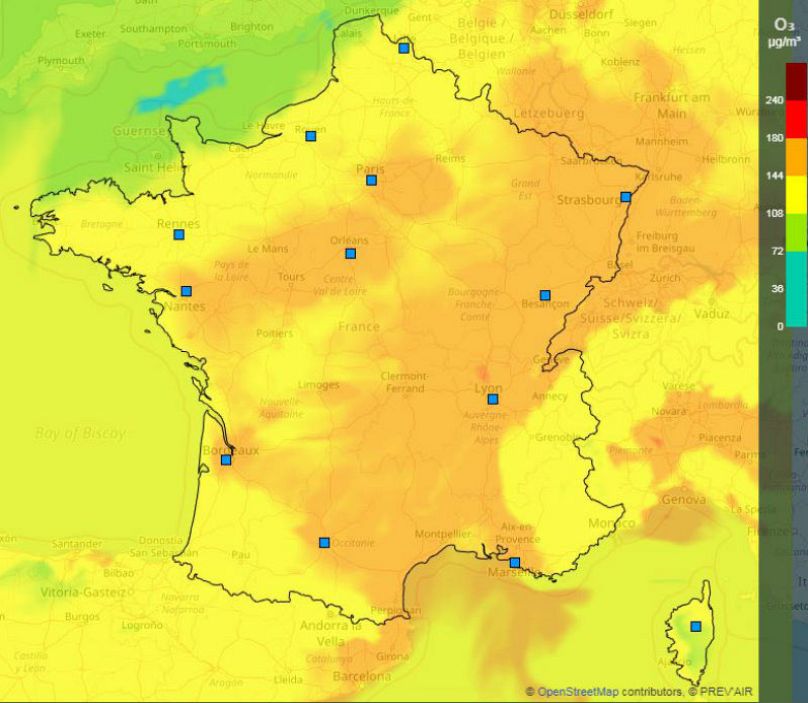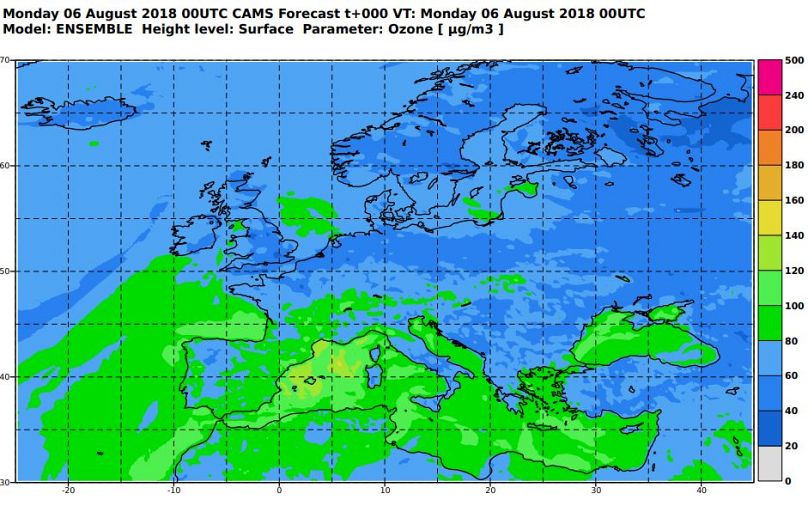French authorities are taking measures to reduce pollution levels amid concerns that ozone levels will spike, adding chronic heart and lung disease to the list of health risks brought about by the heatwave.
As 67 departments are put on orange alert in the continuing European heatwave, the French government is concerned that weather conditions look likely to cause a spike in air pollution. As a precaution, it has imposed speed restrictions on several major routes and limited the type of cars allowed on the roads in the cities of Paris, Lyon and Strasbourg.
According to Prev'Air, the French national platform for predicting air quality, in several areas the amount of atmospheric pollution exceeds the maximum recommended level of 180 µg/m3.
This matters because recent studies have shown that even limited exposure to air pollution can have long-lasting health impacts on the heart and lungs.
Heatwave risks wiping out past improvements in air quality
Augustin Colette, Head of the Atmospheric modelling and environmental mapping unit at Ineris, the French national institute for the industrial environment and risk, told Euronews that:
"Thanks to the implementation of strategies to reduce emissions, the trend over the last 15 years has been towards the reduction in intensity and frequency of ozone spikes. But the situation remains worrying, with only 4% of European stations abiding by the European Environment Agency's standards. This latest episode reminds us of the potential negative consequences of climate change in a context where heatwaves can wipe out the benefits obtained in the past in terms of improved air quality linked to ozone."
Are other European countries affected?
Yes: across Europe, similar reductions in air quality are being predicted as a result of the heatwave.
Note the colours used by Europe's atmosphere monitoring service, Copernicus, on its maps, and its methods for measuring pollution, differ from those used by Prev'Air.
Why does air pollution increase during heatwaves?
We are all familiar with the idea of pollution caused by emissions, such as the nitrogen oxide produced by vehicles and industry.
Not all pollution results from emissions, however. Some pollutants, such as ground-level ozone, are secondary particulates formed by chemical reactions. These, as you will no doubt remember from your school science lessons, happen faster when it gets hotter.
Triple whammy
Heat is something of a triple whammy when it comes to ozone pollution:
High temperatures, low levels of rainfall, strong sunlight and slow wind speeds all combine to increase the emission of volatile organic compounds, such as nitrogen oxides and ammonia, which boost the production of ozone.
Heat in turn speeds up the the reactions that convert volatile organic compounds into ozone and other secondary particle pollutants.
Heat contributes to drought-like conditions which reduce soil moisture and inhibit the role played by vegetation in absorbing ozone from the atmosphere.
Hang on, I thought ozone was a good thing?
In the upper atmosphere, ozone gases protect the earth from harmful ultraviolet rays. This is why any hole in the ozone layer causes concern.
Closer to earth, however, it is a pollutant that can cause muscles in the lungs to contract, making it dangerous for vulnerable people such as asthma-sufferers, the elderly, and young people, and bringing with it a risk of lung infection.


